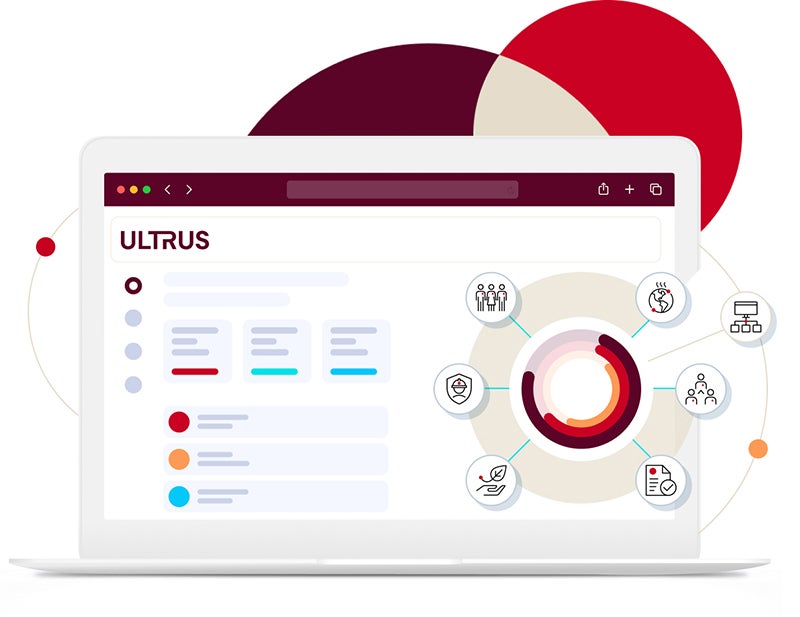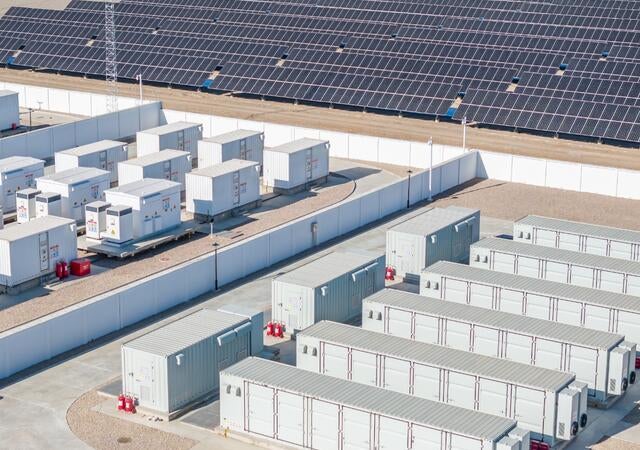Navigating the regulatory landscape of energy storage: A guide for industry professionals
The regulatory and compliance landscape for battery energy storage is complex and varies significantly across jurisdictions, types of systems and the applications they are used in. Technological innovation, as well as new challenges with interoperability and system-level integration, can also amplify risks. Here are the central considerations for all stakeholders to help maintain and advance their market-leading position.
Safety and fire prevention:
- Building codes: Battery energy storage systems (BESS) must comply with local building codes and fire safety regulations, which can vary across different geographies and municipalities. These codes are governed by the National Fire Protection Association (NFPA) in the U.S. and the performance-based European Standards (EN) in the European Union. There are many others, the International Building Code (IBC), the International Fire Code (IFC) and the International Standards Organization (ISO) that play a significant role across different jurisdictions. Examples of building codes include requirements for fire suppression systems, ventilation, electrical safety and more.
- NFPA standards: The NFPA has specific standards for BESS, including NFPA 855 and NFPA 70, which address fire safety, installation and operation.
- Other standards: There are several other independent standards, including UL 1973 and UL 9540, that are widely accepted in the market and govern BESS safety for different applications.
- UL 1973: Batteries for Use in Stationary and Motive Auxiliary Power Applications. Safety standard for modules and battery systems used in stationary energy storage systems.
- UL 9540, Energy Storage Systems and Equipment. Safety standard for energy storage systems used with renewable energy sources such as solar and wind.
- UL 9540A, Test Method for Evaluating Thermal Runaway Fire Propagation in Battery Energy Storage Systems
- IEC 62619, Secondary cells and batteries containing alkaline or other non-acid electrolytes - Safety requirements for secondary lithium cells and batteries, for use in industrial applications. International standard for the safety of modules and battery systems for use in industrial applications.
- Safety testing and certification: BESS and components often require independent safety testing and certification by third-party organizations, i such as UL Solutions. As larger-scale BESS come to market and batteries are used for new applications, new testing mechanisms and certification development are often required.
To maintain a leading position, manufacturers and original equipment manufacturers (OEMs) of BESS components should collaborate proactively on necessary advances in standard development, testing and certification to help ensure safety, optimal system-level performance and deployment of BESS. UL Solutions participates in hundreds of standards panels and working groups around the world to help testing, certification and standard development keep pace with the rate of technological innovation.
Electrical grid integration:
- Interconnection standards: For larger-scale grid-connected energy storage projects, BESS must meet grid interconnection standards set by local utilities and regulatory bodies, which can vary across geographies. Standards include requirements for voltage, frequency and power quality.
- IEC 62933 (International): This standard specifically addresses the performance and safety of BESS, providing guidelines for their integration into electrical networks.
- IEC 62109 (International): Specifies safety requirements for power converters for use in photovoltaic (PV) systems, and addresses electrical, thermal and mechanical safety aspects.
- IEC 61400-21 (International): Focused on wind energy systems, it also includes aspects relevant to energy storage systems when integrated with renewable generation.
- ISO 50001 (International): Provides a framework for energy management systems, promoting energy efficiency and safety in energy production and consumption.
- NERC Standards (North America): The North American Electric Reliability Corporation establishes standards for the reliability of the bulk power system, including requirements for large-scale battery energy storage systems.
- UL 1741 (US): Focuses on the safety of inverters, converters, controllers and interconnection system equipment for use DER and energy storage.
- IEEE 1547 (US): Interconnection requirements for distributed energy resources (DERs), including battery energy storage, with the electric power system.
- CENELEC Standards (Europe): The European Committee for Electrotechnical Standardization (CENELEC) develops standards related to the safety and performance of electrical installations, including those for renewable energy sources.
- EN 50549 (Europe): Requirements for the connection of generating plants to the low-voltage distribution network, including safety and operational guidelines.
- Protection and control systems: BESS requires sophisticated protection and control systems for optimizing performance, preventing equipment damage and ensuring the stability of the electrical grid. These systems must effectively manage fault conditions, maintain power quality and ensure compliance with grid codes while responding quickly to dynamic changes. Several standards address these issues.
- IEC 60255 (International): Requirements for measuring relays and protection equipment, including performance, testing and reliability criteria.
- IEC 61850 (International): Focuses on communication networks and systems for power utility automation and defines the architecture for substation automation and communication protocols for protection and control systems.
- IEC 61000 (International): Deals with electromagnetic compatibility (EMC) and provides guidelines for ensuring electrical equipment operates without interference.
- ISO 9001 (International): Quality management standard (QMS) that can be applied to the design and implementation of these systems to ensure consistent quality and reliability.
- IEC 61508 (International): Provides guidelines for the functional safety of electrical/electronic/programmable electronic safety-related systems, applicable to protection systems in power generation.
- IEEE C37 Series (US): Covers various aspects of power system protection including relay testing, protective relay applications and the performance of protective devices.
- ANSI/IEEE C37.90 (US): Outlines testing requirements for relays and relay systems, ensuring reliability and performance in protection applications.
- IEEE 1003.1 (POSIX) (US): Addresses real-time operating systems, which can be relevant for control systems in power generation, ensuring timely, reliable operation.
- Grid code compliance: BESS must adhere to grid codes to operate safely and effectively with the electrical grid. These codes specify response times, stability contributions, and connection requirements. Monitoring systems provide real-time data to grid operators, and before connecting, the systems must pass testing and certification to ensure compliance. Various organizations, including those associated with the National Electrical Code and the Department of Energy, help establish and enforce these guidelines.
There are 18 Electrical Code-Making Panels in the U.S. alone that contribute to the National Electrical Code (NEC), which consist of experts from fields including electrical engineering, safety, and industry. Electricians, installers, and architects use the NEC as the foundational set of rules for safe electrical installations and electrical infrastructure. Experts from UL Solutions sit on each of these 18 panels, which review proposals, make revisions and ensure that the NEC remains current with technological advancements and safety practices. UL Solutions experts also sit on boards at the Department of Energy and many other referenced groups involved in compliance.
Scrutiny on cybersecurity
The deployment of BESS introduces significant cybersecurity challenges. These systems collect and transmit data, creating new vectors for cyberattacks that can expose stakeholders to risks. Consequently, cybersecurity certification for distributed energy devices and battery energy storage systems is key, with standards expected to evolve in the coming years.
The digitization of utilities and stakeholders integrating renewable energy and BESS adds complexity as upgraded equipment connects to the internet and creates potential security risks. This shift may call for updated regulations and certification standards to ensure strong cybersecurity measures are in place. The quick rollout of these technologies also requires sophisticated software for managing energy effectively, which needs to identify any cybersecurity vulnerabilities through testing. Taking preventive steps is key to stopping unauthorized access and interference with BESS and with the overall grid. As more devices connected to the grid communicate through software, new system-level risks arise, underscoring the importance of proactive strategies to safeguard the reliability and integrity of the electrical grid.
- ISO/IEC 27001 (International): Requirements for establishing, implementing, maintaining, and continually improving an information security management system (ISMS).
- IEC 62443 (International): Addresses cybersecurity for operational technology in industrial automation and control systems, including those used in the electrical grid.
- NERC CIP Standards (North America): Establish requirements for protecting critical cyber assets in the electric grid, including risk assessment, incident response and security management.
- UL 2900 Series (US): Focuses on the cybersecurity of network-connectable products and provides a framework for evaluating the cybersecurity of devices and systems, including energy storage systems.
- NIST Cybersecurity Framework (U.S.): Provides guidelines for managing and reducing cybersecurity risk, applicable to critical infrastructure, including the electrical grid.
- IEEE 1686 (U.S.): Framework for the security of intelligent electronic devices (IEDs) used in electric power systems, focusing on access control, authentication and secure communication.
- C2M2 (Cybersecurity Capability Maturity Model): U.S. Department of Energy model to assess and improve cybersecurity capabilities, particularly in the energy sector.
- NIST SP 800-53 (U.S.): Catalog of security and privacy controls for federal information systems and organizations, applicable to the cybersecurity of critical infrastructure, including the electrical grid.
UL Solutions participates in several partnerships with national labs and the Department of Energy to advance discussions around how to promote cybersecurity as renewable energy, battery energy storage systems, and electric vehicle (EV) charging scales. UL Solutions also has multiple cybersecurity laboratories to support its testing, certification and research activities. One of the primary cybersecurity laboratories is located at UL Solutions’ headquarters in Northbrook, Illinois. The laboratory focuses on evaluating the cybersecurity of products and systems, including those related to energy, industrial control systems and consumer electronics.
Keeping pace with regulatory changes
- Constant evolution: The regulatory landscape for battery storage system is constantly evolving, with new standards, codes and requirements introduced regularly. Stakeholders must dedicate resources to continuously monitoring these changes and updating their products, processes, and procedures to maintain compliance.
- Standard evolution: Standards for testing and certification may need to catch up to the pace of innovation in battery technology or changes to the regulatory landscape. Manufacturers must consider how to pair the rate of their technological innovation with standards and regulatory evolution. Leading manufacturers must also consider how to participate in standards development rather than simply responding to it reactively.
- The risks: Failure to keep up with regulatory updates can expose customers to the risk of non-compliance, which can result in project delays, fines, and reputational damage.
UL Solutions regularly engages external stakeholders to keep up to date with evolutions in regulations and compliance regimes. Key stakeholders include regulatory agencies, industry associations, manufacturers, research institutions, standards development organizations end users, cybersecurity experts, and legal professionals. This collaboration enables UL Solutions to understand industry trends, address safety concerns and align its standards with real-world needs so that its certification processes remain relevant and effective. UL Solutions also has an internal Electrical Council that serves as a collaborative platform, bringing together internal and external industry leaders, experts and stakeholders to address key issues and advancements in electrical safety, performance, and compliance.
Environmental regulations and requirements
- Land use planning: BESS installations often require permits and approvals from local authorities for land use and zoning before projects can proceed to construction and operation. These guidelines specify where BESS can be placed, focusing on factors such as their closeness to existing electrical infrastructure and the need to consider environmental impacts. They also encompass safety measures, processes for involving the community, considerations for how the systems will look, plans for restoring sites after they are no longer in use, and adherence to utility company standards for connecting to the electrical grid safely.
- Environmental impact assessments: The development of large-scale BESS projects requires environmental impact and permitting assessments to evaluate the potential effects on air, water and noise pollution before projects can proceed to construction and operation. By pinpointing risks to local ecosystems, water sources, and air quality, these assessment help ensure adherence to regulations and can help streamline the approval process. They also encourage community involvement through public discussions, allowing concerns to be addressed while incorporating environmental considerations into planning. They help create plans to reduce harmful impacts and include measures for regular monitoring, so that battery energy storage systems are managed responsibly over time but can also slow development.
- Waste management: BESS face several waste management challenges, particularly regarding safe disposal and recycling of used batteries which can be harmful to the environment. Many areas lack adequate recycling facilities, highlighting the need for and likely future institution of regulations that promote more specific waste management requirements.
End-of-life considerations, recyclability and waste management are future growth areas as BESS deployed over the past five and following five years reach their end of life in coming decades. There will be significant opportunities to reuse and repurpose the systems themselves, their components or their core materials. Research into more sustainable battery options can also lead to better recycling and less waste, making these areas important for the future of the industry. These growth areas will also introduce new complexity and risk and require new testing, certification and standards development.
Conclusion
The pace of innovation, commercialization, and deployment in battery energy storage systems puts intense pressure on testing, certification and standard development, all of which ladder up to a rapidly evolving regulatory environment. UL Solutions works with manufacturers bringing new innovations to market, able to test and certify those products for safety, but also positioned to work with customers to develop new standards. The company also sits at the intersection of technological innovation, changes in the regulatory environment, and new testing, certification and standards development. Given its unique position, expertise and long history of helping clients navigate similar challenges across industries, UL Solutions can help OEMs and manufacturers navigate this rapidly evolving landscape and mitigate risk from the pre-manufacturing process to the point of installation and long-term operation.



